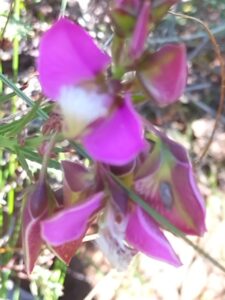How to Propagate Polygala bracteolata

From Seed to Bloom: The Secrets to Propagating Polygala Bracteolata
A riot of vibrant pink and purple, Polygala bracteolata, also known as the Milkwort or Chinese Milkwort, is a charming addition to any garden. Its delicate flowers, resembling tiny butterflies, dance in the breeze, attracting pollinators and adding a touch of whimsical beauty to your landscapes.
But what if you want to share this beauty with friends or expand your own collection of these delightful plants? Fear not, gardening enthusiasts! Propagating Polygala bracteolata is a relatively straightforward process, and you can enjoy the satisfaction of nurturing new life from seed or cuttings.
From Seed to Success:
Growing Polygala bracteolata from seed offers the chance to cultivate a large number of plants and experience the magic of germination firsthand. Here’s a step-by-step guide:
- Collect Seeds: Gather the seeds from mature seed pods, typically after the flowers have faded. These pods will turn brown and dry, indicating ripeness.
- Prepare the Seedbed: Sow the seeds in a well-draining seed tray or pot filled with a seed-starting mix. Lightly cover the seeds with a thin layer of compost.
- Maintain Moisture: Keep the soil consistently moist but not soggy.
- Provide Light: Place the tray in a bright location, but avoid direct sunlight, especially during the hottest hours.
- Germination Time: Polygala bracteolata seeds can take several weeks to germinate. Patience is key!
- Thinning: Once seedlings have developed a few true leaves, thin them out to give the strongest plants ample space to grow.
- Transplanting: When the seedlings are large enough to handle, carefully transplant them to their permanent pots or outdoor beds.
The Art of Taking Cuttings:
For a quicker way to increase your Polygala bracteolata population, taking stem cuttings is an excellent option. Here’s how:
- Choose Healthy Stems: Select non-flowering, semi-hardwood stems from the current season’s growth.
- Prepare the Cuttings: Cut a 3-4-inch section of stem, making a clean cut just below a leaf node.
- Remove Lower Leaves: Remove the leaves from the bottom inch or so of the cutting to encourage root growth.
- Dip in Rooting Hormone: Optionally, dip the cut end in rooting hormone to boost root development.
- Plant in a Rooting Medium: Insert the cuttings into a pot filled with a well-draining potting mix, ensuring that at least one node is buried in the soil.
- Create a Humid Environment: Cover the pot with a plastic dome or wrap it in plastic to retain moisture and create a mini-greenhouse effect.
- Maintain Moisture: Keep the rooting medium moist but not waterlogged.
- Patience is Key: It can take several weeks for roots to develop. Avoid disturbing the cuttings during this time.
- Gradually Acclimate: Once roots have formed, gradually acclimate the new plants to outdoor conditions by removing the cover for short periods each day.
Tips for Success:
- Ensure your potting mix or growing medium is well-draining to prevent root rot.
- Water your plants consistently, allowing the soil to dry slightly between waterings.
- Provide adequate light, but avoid direct sunlight during the hottest hours.
- Fertilize regularly to encourage healthy growth.
Enjoy Your Milkwort Beauty:
With a bit of effort and patience, you can enjoy the cheerful blooms of Polygala bracteolata for years to come. Whether you choose propagation from seed or cuttings, this easy-to-grow plant will reward you with its unique charm and delightful nectar-filled blooms. So, get your hands dirty and start growing your own mini-meadow of Milkwort today!